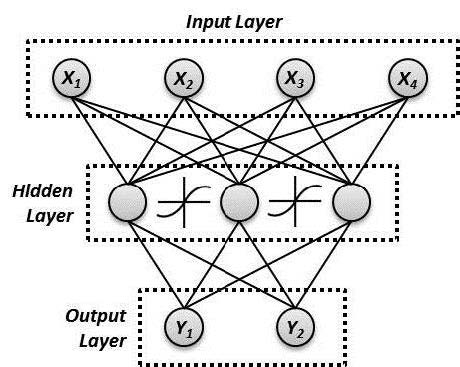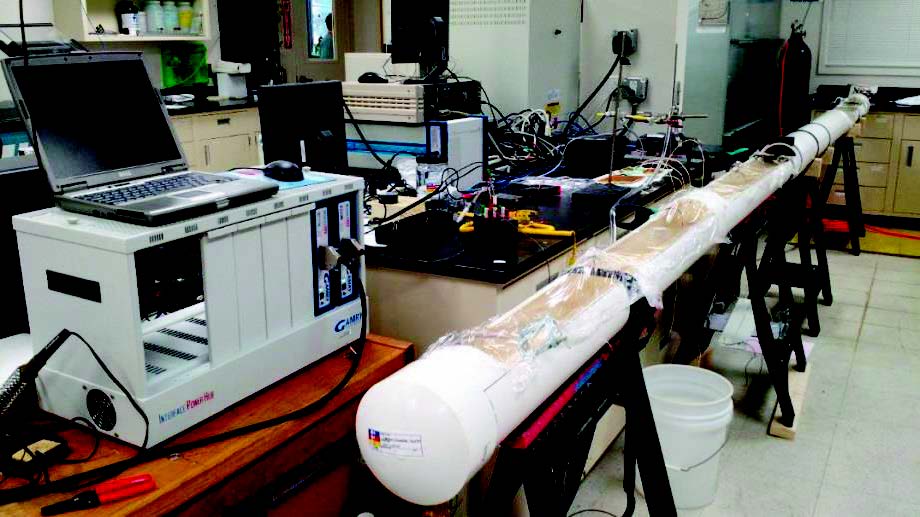Inspecting tanks and enclosures for corrosion is important to the U.S. Navy, Coast Guard, and commercial ship owners and operators. Traditional methods such as visual inspection, the use of corrosion coupons, and some mature nondestructive evaluation techniques are often used to detect the presence and extent of corrosion.
While anode current and potential measurements, optical techniques, and electrochemical impedance spectroscopy have been used to assess corrosion within holding tanks, there remains a significant need for assessment systems that can provide improved sensitivity to coating defects, direct measurements over large areas, defect locations, and quantification of the severity of damage.
According to a CORROSION 2018 paper1 by Kevin Farinholt, Michael Desrosiers, Mark Kim, Ethan Thompson, and NACE International member Fritz Friedersdorf with Luna, Inc. (Roanoke, Virginia, USA), coating systems are utilized to inhibit corrosion of steel tanks and enclosures on seagoing vessels, and are often assessed through visual inspection of the confined space by personnel who enter tanks while vessels are in depot maintenance. Such techniques are often labor intensive and can be limited by physical restrictions that prohibit access to certain areas.
Consequently, it would be desirable to transition to embedded technologies that provide monitoring capabilities that can capture the onset of tank coating deterioration and follow the evolution of damage in an autonomous manner. An automated or in situ inspection method has the potential to reduce operating and maintenance costs by using condition-based assessments to inform maintainers that specific tanks or enclosures require further inspection or repair. One such technology uses electrochemical sensors and stochastic models to detect the onset of coating damage and estimate its extent and location within an enclosed space. This coating condition monitoring system is comprised of a network of sensor nodes that measure environmental conditions and electrochemical parameters to evaluate the coating and substrate health for steel plates and tanks.
The paper reports that the technology uses electrochemical impedance spectroscopy (EIS) techniques to identify the presence of corrosion-induced damage while assessing defect size and location. Based on this approach, detection capabilities were extended to three-dimensional (3-D) plate configurations. Using measurements from a system comprised of four sensing elements, it was possible to construct models of artificial neural networks that identified the presence and size of coating damage, while triangulating location using a small set of fixed frequency impedance measurements.

Artificial neural networks are described in the paper as relatively simple and effective tools that capture and represent complex, nonlinear input/output relationships. According to the authors, these network models mimic the way the human brain processes information, and are used in many applications related to function approximation, pattern recognition and classification, memory recall, prediction, optimization, and noise filtering. The artificial neural network itself is an interconnection of neuron layers, with each neuron containing three components: the node for receiving input, connectivity for passing values along, and multipliers for those values as they proceed through the network.
One input layer, one output layer, and any number of hidden layers comprise an artificial neural network, with each hidden layer adding a degree of nonlinearity. The artificial neural network is trained with output data that are compared to known experimental results (target values) using an iterative error minimization process. Inputs consist of specific frequency impedance measurements collected from the distributed sensor network. For location purposes, a minimum of four sensors are used to triangulate location within the 3-D space.

In a recent study, the authors note, steel substrate and tank coating materials typical of ship construction were used to fabricate a 3-D test cell that simulated tank walls and coating defects. A two-electrode sensing element and coated steel plate were used to make electrochemical impedance measurements. Experiments were designed and completed for a wide range of coating defect sizes and locations within this test cell, as well as tests conducted at two salinity levels to assess how fluid properties influence artificial neural network parameters.
The study used impedance at two distinct frequencies. One frequency provided information that strongly correlated to defect area, and the other correlated with defect position. The output of the artificial neural network provided four parameters that included the predicted defect area along with x, y, and z coordinates. The authors comment that the experimental results clearly indicated that EIS measurements can provide the information needed to obtain a quantitative prediction of coating defect size and location with a properly trained artificial neural network model.
Testing on an extended tube was also done to provide measurement distances up to 5.5 m. These tests included varying salt concentrations similar to those used in the small scale, 3-D environment (0.1 M and 0.6 M sodium chloride [NaCl] concentrations), as well as temperatures of 11, 13, and 20 °C, and defect distances ranging from 0.15 to 5.5 m. This platform was configured to examine the effects of temperature, coating area, and working distance from sensor to defect. The test cell was used to investigate the impact of salinity and temperature on the EIS measurements for varying defect sizes at length scales representative of shipboard ballast tanks. Results within the test cell included EIS measurements collected at different temperature settings.
The investigation demonstrated that two-electrode impedance measurement techniques using simple sensing electrodes can be used to predict coating defect size and relative location within a simple 3-D tank environment over extended distances of up to 5.5 m. The sensor measurements can be used in combination with artificial neural network algorithms to achieve an automated coating damage prediction with high levels of accuracy. Techniques have been validated for different solution resistivity, and are being investigated so the results can be scaled up to full-size tank environments that are comparable to those found in naval vessels.
The authors say the key benefit of this technology is that it would provide ship owners with knowledge of a tank’s current coating health, minimize the need for visual inspections, and alert them of suspected damage so that further inspection or repair activities could be scheduled for the next available maintenance window. When weighing the costs of the technology against inspection schedules typically used by maintainers, the expectation is that an embedded system would also positively impact safety by reducing the number of required visual inspections and work in confined spaces.
Future tests are anticipated to be performed in larger tank environments with additional structural complexity (i.e., reinforcement ribs, plate structures, etc.) to assess the robustness of the artificial neural network in detecting damage within the tank. Additional input parameters—such as phase information, solution conductivity, and temperature—may be useful in determining coating condition and increasing the model’s robustness under real world operating conditions. While testing has focused on small, planar defects, future tests will focus on defects originating in tank corners and weld lines located in less accessible regions of the tank.
Reference
1 K. Farinholt, et al., “Embedded Condition Monitoring System for Tank Coatings,” CORROSION 2018, paper no. 10975 (Houston, TX: NACE International, 2018).